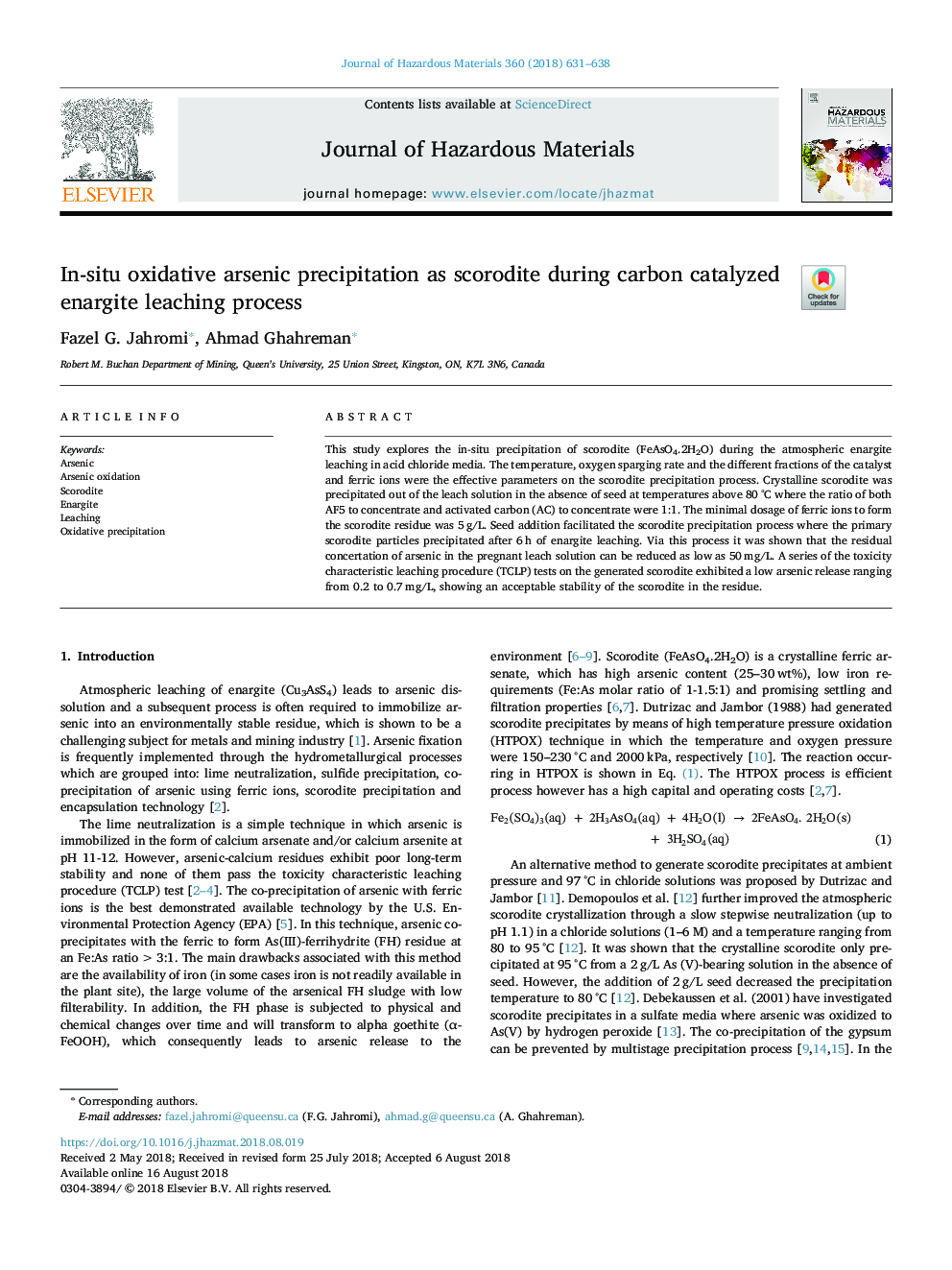| Article ID | Journal | Published Year | Pages | File Type |
|---|---|---|---|---|
| 11003032 | Journal of Hazardous Materials | 2018 | 8 Pages |
Abstract
This study explores the in-situ precipitation of scorodite (FeAsO4.2H2O) during the atmospheric enargite leaching in acid chloride media. The temperature, oxygen sparging rate and the different fractions of the catalyst and ferric ions were the effective parameters on the scorodite precipitation process. Crystalline scorodite was precipitated out of the leach solution in the absence of seed at temperatures above 80â°C where the ratio of both AF5 to concentrate and activated carbon (AC) to concentrate were 1:1. The minimal dosage of ferric ions to form the scorodite residue was 5âg/L. Seed addition facilitated the scorodite precipitation process where the primary scorodite particles precipitated after 6âh of enargite leaching. Via this process it was shown that the residual concertation of arsenic in the pregnant leach solution can be reduced as low as 50âmg/L. A series of the toxicity characteristic leaching procedure (TCLP) tests on the generated scorodite exhibited a low arsenic release ranging from 0.2 to 0.7âmg/L, showing an acceptable stability of the scorodite in the residue.
Related Topics
Physical Sciences and Engineering
Chemical Engineering
Chemical Health and Safety
Authors
Fazel G. Jahromi, Ahmad Ghahreman,
